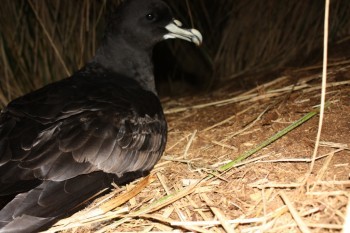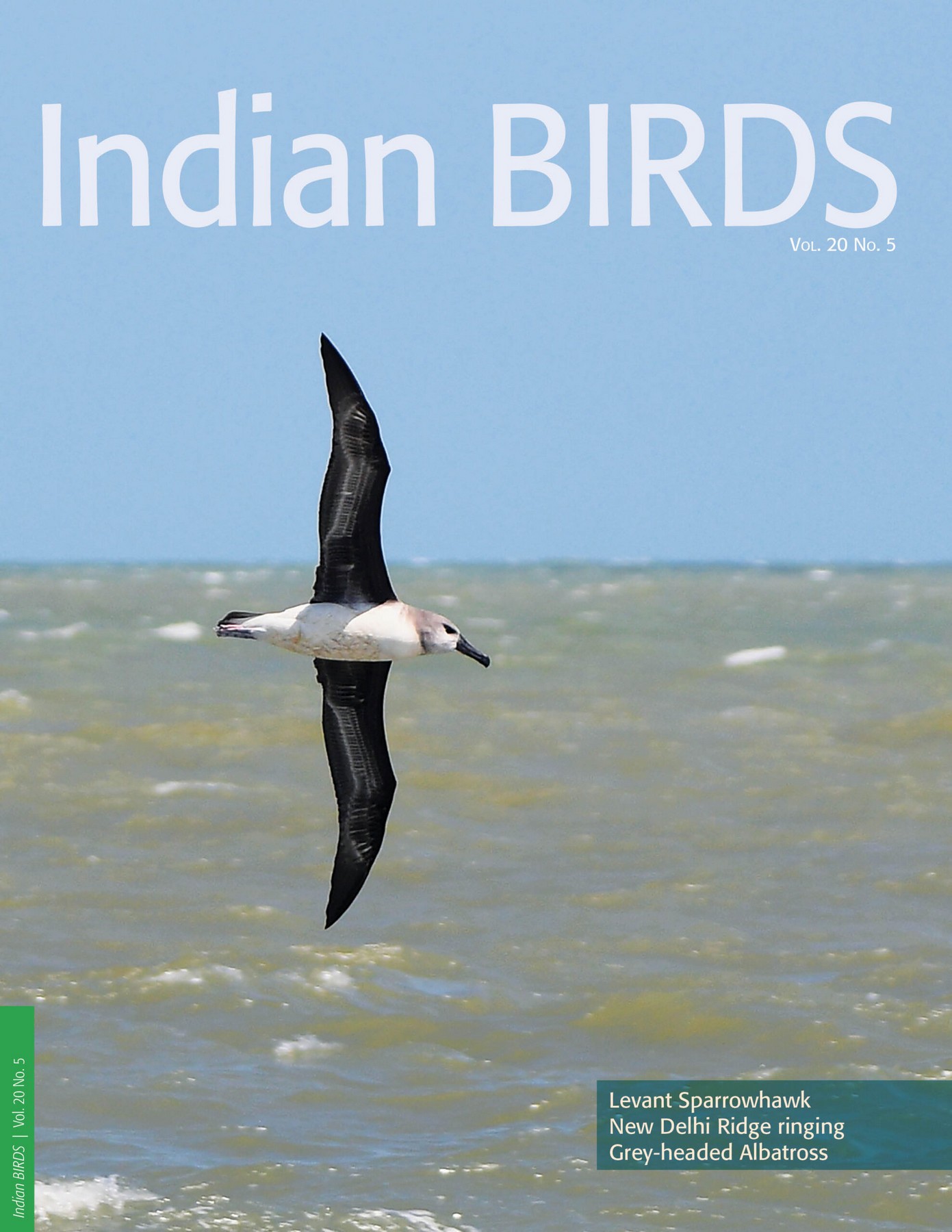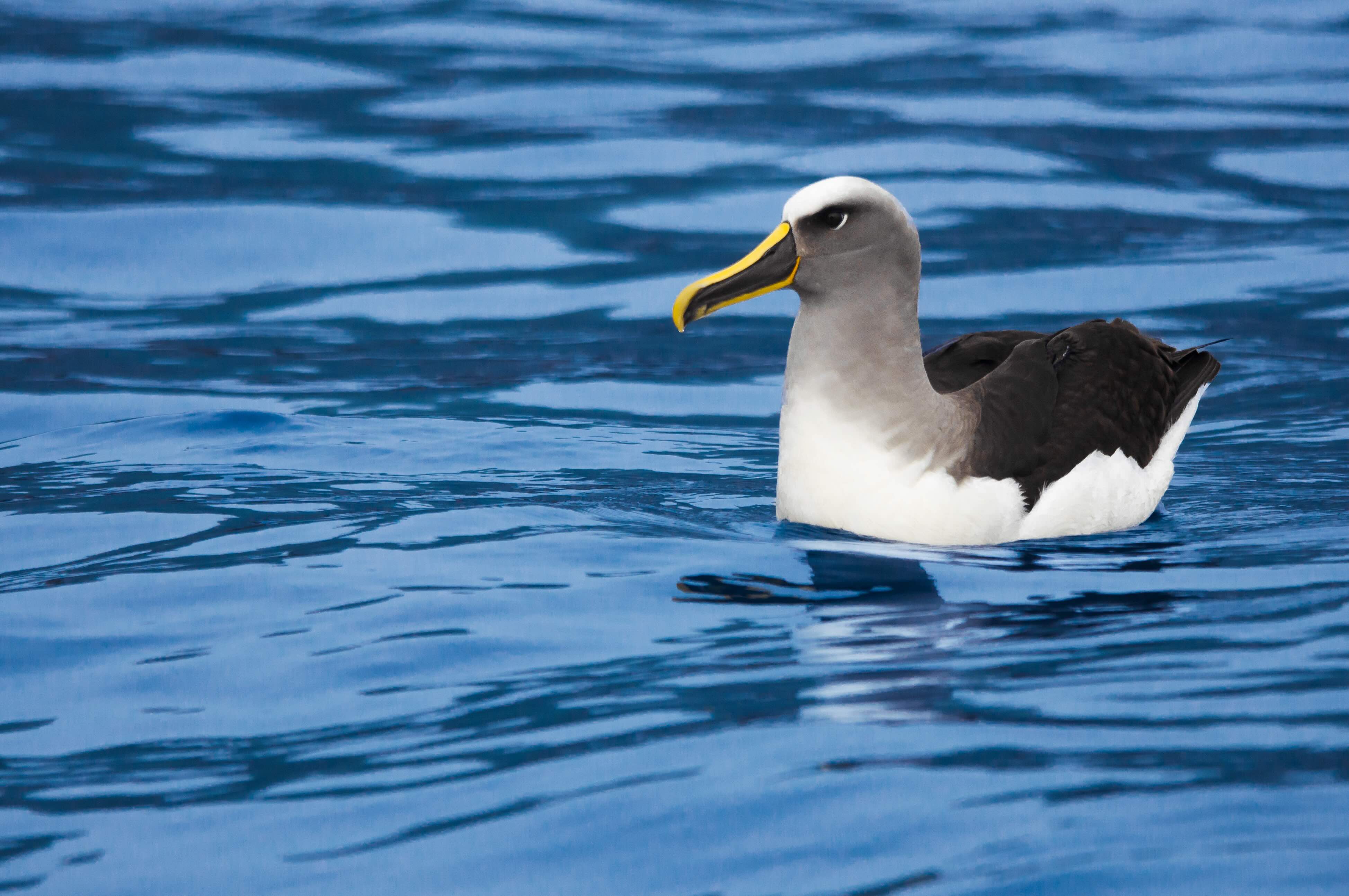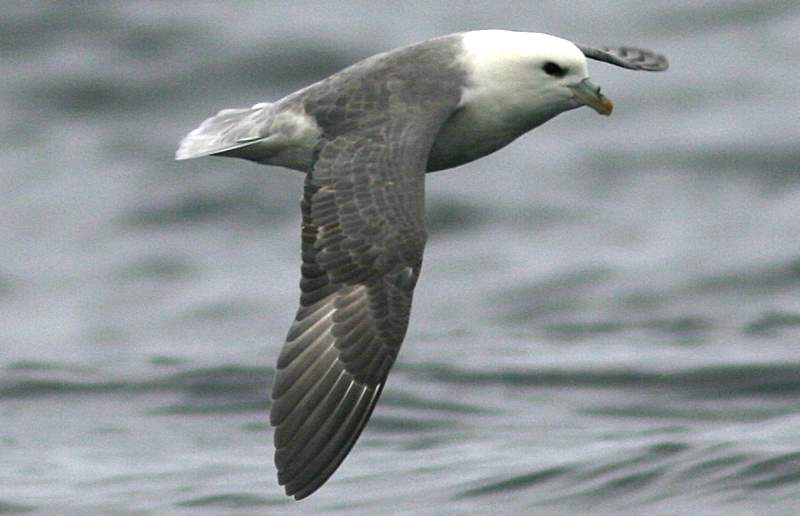
A White-chinned Petrel among tussac on Top Island, photograph by Kalinka Rexer-Huber
Amanda Kuepfer (Falklands Conservation) and colleagues have published a report of a survey of Vulnerable and ACAP-listed White-chinned Petrels Procellaria aequinoctialis and of Sooty Shearwaters Ardenna grisea on two islands, Kidney and Top, within the Falkland Islands (Islas Malvinas)*. The research was undertaken to “fulfil international commitments under the Agreement on the Conservation of Albatrosses and Petrels (ACAP) to monitor and manage ACAP breeding sites.”
The survey results from the summary follow:
“Kidney Island 2023/2024
- Sooty shearwater population size = 131,000 (95% CI: 95,000 – 176,000) breeding pairs. This estimate is not notably different from 2016 (123,000; 95% CI: 87,000 – 167,000 breeding pairs), and gives no strong indication of an important increase or decrease in breeding pairs at this site.
- White-chinned petrel population size = 331 (95% CI: 52 – 1043) breeding pairs. This represents a baseline estimate using a model-based approach.
Top Island 2023/2024
- Sooty shearwater population size = 12,000 (95% CI: 7,000 – 19,000) breeding pairs. This represents a baseline estimate.
- White-chinned petrel population size = 199 (95% CI: 33 – 594) breeding pairs. This represents a baseline estimate”.
The summary ends with management recommendations:
“Sooty shearwaters were found in greater numbers in areas with dense tussac over peat, while white-chinned petrels were most numerous in areas of tussac peat with higher moisture content. Additionally, like most burrowing seabirds, these species are susceptible to invasive mammals and other non-native species due to predation and habitat loss. Effective site management for sooty shearwater and white-chinned petrels should focus on preserving healthy tussac habitat, maintaining suitable peat condition for burrowing, and ensuring the continued absence of invasive mammals. Biosecurity efforts should further aim to minimise the risk of introducing invasive plants, invertebrates and pathogens. Additional monitoring efforts to further refine population estimates and track habitat availability could be considered.”
Read an earlier article in ACAP Latest News on the surveys here.
Reference:
Kuepfer, A., Lee, B. & Stanworth, A. 2024. Burrowing Seabird Survey 2023/2024: Population Estimates of Sooty Shearwaters and White-chinned Petrels on Kidney Island and Top Island, Falkland Islands. Stanley: Falklands Conservation. 50 pp.
John Cooper, Emeritus Information Officer, Agreement on the Conservation of Albatrosses and Petrels, 10 December 2024
*A dispute exists between the Governments of Argentina and the United Kingdom of Great Britain and Northern Ireland concerning sovereignty over the Falkland Islands (Islas Malvinas), South Georgia and the South Sandwich Islands (Islas Georgias del Sur y Islas Sandwich del Sur) and the surrounding maritime areas.


 English
English  Français
Français  Español
Español  A Buller’s Albatross floating on the water; photograph by Enzo M.R. Reyes
A Buller’s Albatross floating on the water; photograph by Enzo M.R. Reyes


